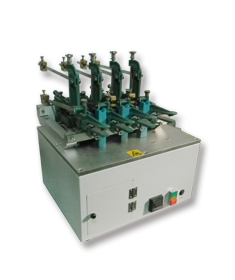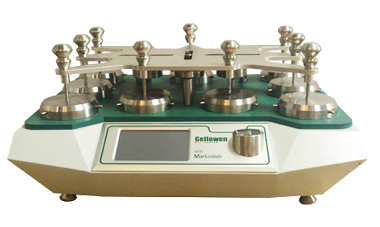
NewsInformation Center
What is the difference between Wyzenbeek and Martindale?
2023/09/20
The Wyzenbeek test and the Martindale test are both common test methods used to evaluate the abrasion resistance of fabrics. Although they are both famous for abrasion resistance testing, there are some differences in testing principles, standards and interpretation of results.
1. Testing principle:
- Wyzenbeek test: The Wyzenbeek test uses a pair of rollers with locking knives, and under fixed pressure, there is constant friction between the cloth sample and the wear material on the rollers. The testing machine is equipped with a counter to record the wear and tear of the material after a certain number of reciprocations.
-Martindale test: The Martindale test uses a pair of circular abrasion heads to apply force in a rotating manner to abrade the fabric. The testing machine is equipped with a counter with a Lawrence counter to record the wear of the material after a certain number of reciprocations.
2. Test standards:
- Wyzenbeek test: Tested according to the D4157 standard of the American Society for Testing and Materials (ASTM). This standard specifies specific details such as test stroke length, test period and wear assessment.
- Martindale Test: Tested according to various international standards (such as ASTM D4966, ISO 12947-2, EN 14465, etc.). These standards define test parameters, fabric sample dimensions and test conditions, and the interpretation of test results.
3. Interpretation of test results:
- Wyzenbeek test: Wyzenbeek test results are expressed in the number of wear times of the test sample. For household fabrics, a common life standard is 20,000 to 30,000 wear and tear. According to the standard, fabrics that have been worn more than 20,000 times are considered to have good wear resistance.
-Martindale test: Martindale test results are expressed in terms of the number of wear cycles of the test sample. According to different standards, the durability requirements of fabric samples are also different. Generally, for fabrics for commercial use, the general requirement is more than 20,000 to 30,000 cycles.
4. Application areas:
- Wyzenbeek test: The Wyzenbeek test is commonly used to evaluate the resistance of furniture fabrics, car seat fabrics, upholstery fabrics, etc. to friction and wear in daily use.
-Martindale test: Martindale test is suitable for various fabrics, including clothing fabrics, furniture fabrics, aviation seat fabrics and industrial fabrics, etc.
In summary, although the Wyzenbeek test and the Martindale test are both common methods for testing the abrasion resistance of fabrics, they have some differences in testing principles, standards and interpretation of results. Proper selection and interpretation of test results requires reference to the appropriate standards and consideration of the wear resistance requirements required in the specific application.
Although Wyzenbeek and Martindale are commonly used wear test methods, there is no mandatory conversion standard between them, so the results of one test cannot be directly compared with the other. The choice of which test method to use depends on the type of fabric to be evaluated, the application scenario and the requirements of the relevant industry.
Previous: What are the industry standards and regulations for fabric tear strength testing
N e x t : What is the Wyzenbeek test used for?





